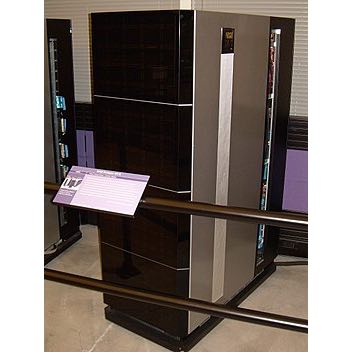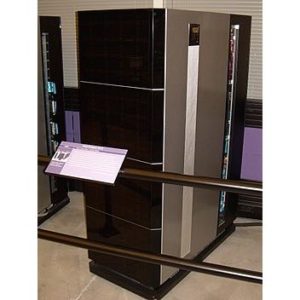We came across a rare copy of this this vintage video recently. Check out the hair styles as Intel launches the Paragon line of supercomputers, a series of massively parallel systems produced in the 1990s.
In 1993, Sandia National Laboratories installed an Intel XP/S 140 Paragon supercomputer, which claimed the No. 1 position on the June 1994 TOP500 list. With 3,680 processors, the system ran the Linpack benchmark at 143.40 Gflop/s. It was the first massively parallel processor supercomputer to be indisputably the fastest system in the world.
The Paragon XP/S is a productized version of the experimental Touchstone Delta system that was built at Caltech, launched in 1992. The Paragon superseded Intel’s earlier iPSC/860 system, to which it is closely related.
After its initial success, Intel discontinued the Paragon series and effectively exited the HPC for a number of years. Ed Masi, the Intel manager responsible for the Intel Paragon machines, said that building parallel computers was “real hard” technically and financially. He noted that the U.S. government has given considerable support in the past to the development of big computing machines, especially in 1983 with the inauguration of the National Science Foundation’s four supercomputer centers and in 1989 with the High Performance Computing and Communications (HPCC) initiative.
Big computing machines, like giant telescopes, are enormously important tools because they lead to new discoveries,” Masi said. He challenged the government to continue support for the development of faster computing machines, and he challenged ORNL scientists “to make great use of this outstanding tool” and get results to justify continued government funding.
The Paragon series was based on the Intel i860 RISC microprocessor. Initially, up to 2048 (later, up to 4096) i860 processors were connected in a 2D grid. In 1993, an entry-level Paragon XP/E variant was announced with up to 32 compute nodes.
Intel intended the Paragon to run the OSF/1 AD distributed operating system on all processors. However, this was found to be inefficient in practice, and a light-weight kernel called SUNMOS was developed at Sandia National Laboratories to replace OSF/1 AD on the Paragon’s compute processors.
Oak Ridge National Laboratory operated a Paragon XP/S 150 MP, one of the largest Paragon systems, for several years.
The prototype for the Intel Paragon was the Intel Delta, built by Intel with funding from DARPA and installed operationally at the California Institute of Technology in the late 1980s with funding from the National Science Foundation. The Delta was one of the few computers to sit significantly above the curve of Moore’s Law.”
Editor’s note: The Paragon video was produced by Mike Bernhardt (at the time, Intel’s Director of Market Relations) along with CMD, a local Portland, OR-based creative development firm. The local talent they hired to do the film’s narration is none other than Jeff Probst, who you may recognize as the host of the popular “Survivor” TV series.
Source: Wikipedia






With a bit of nostalgia, I remember the one installed at ONERA in France, so nice to see all the lights up when launching some MPI communication program on it, like illustrated at the end of the video 🙂
Thanks for sharing !
What a blast from the past. And to think – Jeff Probst has scaled faster than exascale.
I also remember the one at ONERA, Mark Rogers and I installed it under the watchful eyes of Christophe M and Pierre L. Happy days calling security to ensure that the dogs running round the compound were safely inside before Mark and I trudged back to our hotel…